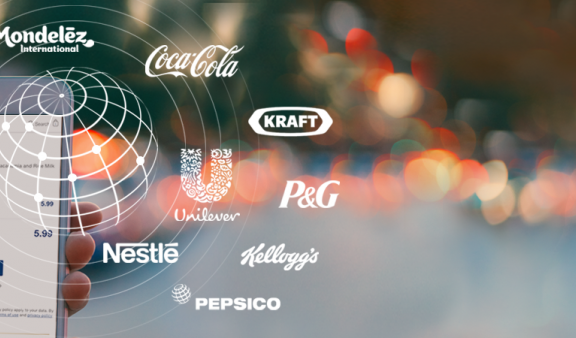
D2C for FMCG: Setting the stage for success
Thank you to Victor Terpstra of Osudio Netherlands for this excellent piece on the hurdles of moving direct-to-consumer in FMCG.
The present COVID-19 hygienic constraints have created an incredible opportunity for D2C experimentation. However, once the situation returns to "normal," those who wish to continue their D2C journey may need to reconsider the consumer problems they are attempting to solve, develop an outstanding value proposition, and integrate this new model into a consistent multi-channel offering in order to make it long-term sustainable.
The 'direct-to-consumer' (D2C) phenomenon is sweeping the retail industry. Due to the success of disruptive companies such as Dell, Apple, Amazon, Nike, and Tesla, FMCG companies are becoming increasingly interested in eliminating the middleman. The most notable acquisition to date has been Unilever's $1 billion purchase of Dollar Shave Club, a direct-to-consumer (D2C) start-up that is directly competing with Gillette. However, acquisition isn't the only option. The challenge remains: how do you optimize revenue by directing your entire portfolio of brands toward the consumer?
The Age of the Customer has arrived, bringing with it the next generation of commerce. Consumers, according to a recent WFA research, would be unconcerned if 74% of today's brands vanished tomorrow. It's all about forming bonds. That's why many start-up brands bypass established retail channels in favor of communicating with customers directly online. These start-ups are taking on the big companies with an unbroken consumer focus, the development of genuine online relationships, ongoing innovation, and, in many cases, superior pricing. After all, worldwide online FMCG sales are predicted to reach 130 billion dollars by 2025, and the industry's existing leaders appear to be reluctant to respond.
What keeps FMCG leaders from going D2C?
A compelling customer value proposition that identifies and answers a clear consumer problem is required for D2C success. Putting your entire product line online is insufficient. Today's customers prefer higher-quality goods, cheaper prices, greater convenience, and a far better shopping experience. While new D2C brands work hard to develop these offerings, the big players remain entrenched in their dominance. This is due to a number of factors, including obsolete technology, hard-won shelf space, outdated marketing methods, and a limited capacity to innovate and create direct ties with customers.
In terms of logistics, fulfillment, and consumer attention, FMCG companies are discovering how tough it is to compete with a retailer's economies of scale. Their numerous brands, on the other hand, are frequently hosted on disparate systems that fail to integrate customer data and insights.
Think big, start small, scale fast
Data is used to fight for the consumer's attention. Because client data allows you to continuously improve your offering and the customer experience, thereby strengthening the relationship. FMCG companies already have a lot of customer data, which is often stored in old systems. The first issue to address is legacy, which is a no-brainer with quick solutions like code transformation. With the help of a business intelligence (BI) solution, you can transform data held in silos and make it accessible and actionable. You might use this day to assess the present situation and devise measures for improvement.
Rethinking your e-commerce approach is the next stage. With a strong product range and appropriate resources, getting started with e-commerce was very simple. However, much of the low-hanging fruit has already been picked. You'll need to scale up in terms of both quantity and quality: enhance the client experience by collecting more data and putting more structure in place.
Scale in both volume and quality
More customers' expectations will be met, either by doing more or better work.
This model depicts two variables to think about:
- Scaling the business horizontally: Focus on quantity. Do more: more products, more customers, more countries, more orders and make more revenue. Doing more in a smart way means focusing on your tools and processes. To do this adequately, you‘ll need a good basis of data and governance forming a stable structure.
- Scaling the business vertically: Here you focus on quality. Each time one of your competitors is raising the bar, your customer’s expectations increase. You have to do things better, because just doing more is not enough. Be obsessed about the customer experience. You mainly need flexibility, so you can embrace continuous change and apply design thinking.
SCALING HORIZONTALLY: GO FOR MORE STRUCTURE AND DATA
More items, countries, consumers, and orders are on the way. More products to onboard, more images and videos to shoot, more stock, more service calls, and more product returns are all implications. You may also need more warehouses and e-commerce personnel, depending on your situation. What does this mean for you and your e-commerce business? How can you expand quickly and sustainably while maintaining control?
Structure is the key to horizontal scalability. You can plan, execute, and report with a clear and consistent structure. Structure allows you to better react to new situations, such as the introduction of new product lines or distribution channels. Structure is the firm foundation that will allow you to respond to new difficulties quickly and efficiently. Three important dimensions are represented by structure:
- Data that is clean, complete, and consolidated: product and customer information;
- Processes that are well documented. When you expand up or move teams, this will protect the quality of your data;
- Tools that assist the data and process structure in the core (by workflows, data model and architecture).
The following are the primary platforms that make up the foundation of an e-commerce business:
- PIM: your product data management platform;
- CRM: your customer data management platform;
- Your e-commerce platform consisting of: pricing and promotions, transactions, order management;
- The Analytics or Business Intelligence platform.
With these four pillars in place, you'll be able to feed quality data to your web frontends, logistical service providers, and customer service. The better and more consistent the data, the more easily you can scale up in quantity while still satisfying your customers' expectations.
SCALING VERTICALLY: ALWAYS IMPROVE
Meeting or exceeding the customer's expectations is linked to vertical scaling. This should be every online marketer's and e-commerce manager's primary responsibility, but in practice, it's not uncommon for a marketer to be preoccupied with the next big thing. This might include things like conversion attribution, improving checkout, introducing a DMP for merchandising and personalisation, and so on. However, no single solution will solve all of your difficulties. Simply put, the market is too crowded. Whatever you're working on, some of your competitors will follow suit or will be ahead of you. As a result, the best solution is to keep improving.
Make an attempt to improve the weakest link week after week. To be able to react to changes and continuously experiment for new methods of doing things, you'll need your resources (tools, budget, and people). This necessitates adaptability, tight collaboration across departments and specialties, and the capacity to improve results incrementally. And, on top of that, you'll have to start fussing over your consumers' experiences.
We can help you with all areas of going direct-to-consumer at SQLI Switzerland, including
- Business Innovation Strategy,
- Customer Experience & Engagement,
- Commerce & Performance,
- Customer & Data Intelligence.
If you want to go direct-to-consumer, don't hesitate to contact me!



